Cuba is an island country in the Caribbean, consisting of the main island, Isla de la Juventud, and numerous smaller islands and cays. Located at the intersection of the Caribbean Sea, Gulf of Mexico, and Atlantic Ocean, its neighbors include the Yucatan Peninsula, Florida, the Bahamas, Hispaniola, Jamaica and the Cayman Islands. Havana is its capital and largest city. With approximately 10 million inhabitants, Cuba is the third-most populous and largest country by area in the Caribbean. Culturally, Cuba is considered part of Latin America.
May 1902: Formal independence from the U.S.
On 20 May 1902, Cuba gained formal independence from the U.S. as the Republic of Cuba, though the U.S. retained rights to intervene and leased the Guantánamo Bay Naval Base.
1902: Independence
In 1902, Cuba gained independence after the Spanish–American War, following a period of occupation by the United States.
1902: Start of Republican Period
In 1902, the Republican period began, marking a time of construction of prominent public and commercial buildings in Cuba.
1906: U.S. Intervention
In 1906, following disputed elections, the U.S. intervened in Cuba, occupying it and appointing Charles Edward Magoon as governor for three years.
1908: Self-government restored
In 1908, self-government was restored when José Miguel Gómez was elected president, but the U.S. continued intervening in Cuban affairs.
1912: Suppression of the Partido Independiente de Color
In 1912, the Partido Independiente de Color's attempt to establish a separate black republic in Oriente Province was suppressed by General Monteagudo with considerable bloodshed.
1921: Capablanca Chess Champion
In 1921, Jose R. Capablanca became the Cuban world chess champion.
1924: Election of Gerardo Machado
In 1924, Gerardo Machado was elected president of Cuba. During his administration, tourism increased and American-owned hotels and restaurants were built.
1927: End of Capablanca's Reign
In 1927, Jose R. Capablanca's reign as Cuban world chess champion ended.
1929: Wall Street Crash
The Wall Street crash of 1929 led to a collapse in the price of sugar, political unrest, and repression in Cuba.
1930: Spanish Immigration to Cuba
Between 1899 and 1930, close to a million Spaniards immigrated to Cuba, with many eventually returning to Spain. In 1930 the large wave of Spanish immigration to Cuba ended.
1930: Emergence of the Generation of 1930
In 1930, protesting students, known as the Generation of 1930, turned to violence in opposition to the increasingly unpopular Machado.
August 1933: Machado Forced into Exile
In August 1933, a general strike, uprisings, and an army revolt forced Gerardo Machado into exile, after which he was replaced by Carlos Manuel de Céspedes y Quesada.
September 1933: Sergeants' Revolt
In September 1933, the Sergeants' Revolt, led by Sergeant Fulgencio Batista, overthrew Céspedes, resulting in the appointment of Ramón Grau San Martín as provisional president.
1933: Extended Economic regulations
Between 1933 and 1958, Cuba extended economic regulations enormously, causing economic problems.
1933: Coup against Céspedes
In 1933, a coup toppled the democratically elected government of Carlos Manuel de Céspedes y Quesada, marking the beginning of a long period of military influence, particularly by Fulgencio Batista.
1934: Grau's resignation
In 1934, Ramón Grau San Martín resigned as provisional president, paving the way for Batista's dominance in Cuban politics.
1935: Three Different Presidents
During the period 1935–1936, Cuba saw three different presidents.
1936: Three Different Presidents
During the period 1935–1936, Cuba saw three different presidents.
1937: Period of Warfare
The period from 1933 to 1937 was a time of "virtually unremitting social and political warfare" in Cuba.
1940: Batista's Adherence
Batista adhered to the 1940 constitution's strictures preventing his re-election.
1940: New constitution adopted; Batista elected president
In 1940, Cuba adopted a new constitution that promoted progressive ideas, and Batista was elected president, holding the post until 1944.
1940: Implementation of new constitution
In 1940, Cuba implemented a new constitution amidst mounting political unrest.
1940: Batista suspended 1940 constitution
In 1952, Batista, after leading a military coup, suspended the 1940 constitution.
1940: Political structures
On balance, during the period 1933–1940, Cuba suffered from fragile political structures.
1944: Batista in Florida
After finishing his term in 1944, Batista lived in Florida, returning to Cuba to run for president in 1952.
1944: End of Batista's term
In 1944, Batista's term as president ended.
1944: Ramon Grau San Martin Winner of Election
Ramon Grau San Martin was the winner of the next election, in 1944.
1948: Carlos Prío Socarrás became president
Carlos Prío Socarrás, a protégé of Grau, became president in 1948. The two terms of the Auténtico Party brought an influx of investment, which fueled an economic boom, raised living standards for all segments of society, and created a middle class in most urban areas.
1948: Labor unions manipulated by the government
The labor unions, manipulated by the previous government since 1948 through union "yellowness", supported Batista until the very end.
1952: Cuban coup d'état by Batista
In 1952, Batista led a Cuban coup d'état, establishing an autocratic government.
1952: Batista's coup d'état
In 1952, facing inevitable electoral defeat, Batista led a military coup, suspended the 1940 constitution, and outlawed the Cuban Communist Party.
1956: Castro and supporters landed from Granma
In 1956, Fidel Castro and about 80 supporters landed from the yacht Granma in an attempt to start a rebellion against the Batista government.
1957: Infant Mortality Rate
In 1957, Cuba had an infant mortality rate of 32 infant deaths per 1,000 live births.
December 1958: Batista's resignation
In December 1958, Batista resigned under pressure from the US Embassy and as the revolutionary forces headed by Fidel Castro were winning militarily.
1958: Rebels break out of the Sierra Maestra
By late 1958, the rebels had broken out of the Sierra Maestra and launched a general popular insurrection.
1958: Castro's July 26th Movement emerges as the leading revolutionary group
In 1958, Castro's July 26th Movement emerged as the leading revolutionary group, and the U.S. imposed an arms embargo against Batista's government.
January 1959: Overthrow of Batista's government
In January 1959, the 26th of July Movement overthrew Fulgencio Batista's autocratic government during the Cuban Revolution, leading to communist rule under Fidel Castro.
January 1959: Batista Fled and Castro's Forces Entered the Capital
On 1 January 1959, after Castro's fighters captured Santa Clara, Batista fled to the Dominican Republic. On 8 January 1959 Fidel Castro's forces entered the capital.
January 1959: Start of Mass Emigration
Starting in January 1959, post-revolution Cuba experienced significant emigration, leading to a large diaspora community.
1959: Start of National Literacy Campaign
After the 1959 revolution, the Cuban government started a national literacy campaign, offered free education, and established rigorous sports, ballet, and music programs.
1959: Cuban Peso Set at Par with US Dollar
Before 1959, the Cuban peso (CUP) was set at par with the US dollar.
1959: Cuban Revolution
Following the 1959 revolution, broad restrictions on travel were imposed to prevent mass emigration of people.
1959: Hostility towards Homosexuality
From 1959 until the 1990s, official policies of the Cuban government were hostile towards homosexuality, with the LGBT community marginalized on the basis of heteronormativity, traditional gender roles, and strict criteria for moralism.
1959: Executions following the Revolution
Immediately following the 1959 Revolution, public trials and executions occurred targeting members of the Batista regime accused of torture and murder.
1959: Armed attacks by anti-Castro groups
In 1959, militant anti-Castro groups, funded by the CIA and Rafael Trujillo, carried out armed attacks and set up guerrilla bases in Cuba's mountainous regions, leading to the Escambray rebellion.
1959: U.S. military presence in Guantánamo Bay
Since 1959, Cuba has regarded the U.S. military presence in Guantánamo Bay as illegal.
1959: Government Control Over the Economy
Since 1959, the Cuban government has maintained stringent control over the economy, contributing to the island's persistent shortages of food and medicine.
1959: End of Republican Period
The Republican period lasted until 1959 and saw construction of prominent public and commercial buildings in Cuba.
February 1960: Commercial agreement with the Soviet Union
In February 1960, Castro signed a commercial agreement with Soviet Vice-Premier Anastas Mikoyan.
March 1960: CIA plan to overthrow Castro government approved
In March 1960, U.S. President Dwight D. Eisenhower approved a CIA plan to arm and train Cuban refugees to overthrow Fidel Castro's government.
April 1960: Mallory Memo Argues for Embargo
On 6 April 1960, American diplomat Lester D. Mallory wrote an internal memo arguing in favor of an embargo as a means of alienating internal support for the Cuban government through economic hardship.
1960: U.S. Embargo on Cuba Initiated
In 1960, the U.S. embargo on Cuba was initiated by President Dwight Eisenhower, prohibiting all exports to Cuba, with the exception of medicines and certain foods, in response to nationalizations of American properties.
1960: Start of the United States embargo against Cuba
Ongoing since 1960, the United States embargo against Cuba stands as one of the longest-running trade and economic measures in bilateral relations in history.
April 1961: Bay of Pigs Invasion
On April 15, 1961, Brigade 2506 carried out airstrikes on Cuban military airfields. The Bay of Pigs Invasion took place on April 17, 1961, with about 1,400 Cuban exiles disembarking at the Bay of Pigs. By April 19, 1961, Cuban troops and local militias defeated the invasion.
1961: Population Growth Since 1961
Although Cuba's population has grown by about four million people since 1961, the rate of growth slowed during that period.
1961: Cuba Supported Algeria
From 1961 to 1965, Cuba supported Algeria.
1961: Travel restrictions imposed
In 1961, the Cuban government imposed broad restrictions on travel to prevent the mass emigration of people after the 1959 revolution.
1961: Foreign Assistance Act
In 1961, the Foreign Assistance Act approved by Congress was used as basis to extend the restrictions to Cuban imports.
January 1962: Cuba suspended from OAS
In January 1962, Cuba was suspended from the Organization of American States (OAS).
October 1962: Cuban Missile Crisis
In October 1962, the Cuban Missile Crisis almost sparked World War III due to the Soviet decision to deploy R-12 missiles in Cuba.
1962: Cuban Missile Crisis
In 1962, the Cuban Missile Crisis occurred, widely considered the closest the Cold War came to escalating into nuclear war.
1962: Embargo Intensified and Naval Blockade Imposed
In 1962, under the administration of John F. Kennedy, the U.S. embargo on Cuba was intensified, extending the restrictions to Cuban imports. The United States even imposed a naval blockade on Cuba during the Missile Crisis, but this was lifted following the resolution of the crisis.
1962: U.S. Trade Embargo
Since 1962, the U.S. trade embargo has been in place, contributing to Cuba's persistent shortages of food and medicine.
1963: Cuba moves towards communist state
By 1963, Cuba was moving towards a full-fledged communist state system modeled on the USSR.
1964: US imposed trade ban
Between 1960 and 1964 the U.S. imposed a range of sanctions, eventually including a total ban on trade between the countries and a freeze on all Cuban-owned assets in the U.S.
1964: Menoyo sets up guerrilla training camp
In 1964, Eloy Gutiérrez Menoyo set up a guerrilla training camp in the Dominican Republic for the anti-Castro group Alpha 66.
1965: Cuba supplies arms to MPLA
By the middle of 1965, Cuba had begun supplying arms to the People's Movement for the Liberation of Angola (MPLA).
1965: Cuba Supported Algeria
From 1961 to 1965, Cuba supported Algeria.
1965: Menoyo captured, Alpha 66 continues raids
In 1965, Eloy Gutiérrez Menoyo entered Cuba and was captured, but Alpha 66 continued its raids under new leadership.
1966: Cuban aid reaches Guinea and Cape Verde
In 1966, Cuban aid also reached the African Party for the Independence of Guinea and Cape Verde.
1968: "Revolutionary offensive" nationalizes businesses
Starting in 1968, a campaign titled the "revolutionary offensive" was initiated to nationalize all remaining private small businesses, totaling about 58,000 small enterprises, to spur industrialization and focus on sugar production with a harvest deadline by 1970.
November 1969: Portuguese capture Cuban Captain
In November 1969, the Portuguese captured Cuban Captain Pedro Rodriguez Peralta.
1970: Sugar harvest goal not reached, economy declines
By 1970, the ten million ton sugar harvest goal was not reached. The Cuban economy fell into decline after large sectors of the economy were neglected when large amounts of urban labor mobilized to the countryside.
1970: Castro admits failures of economic policies
In 1970, Fidel Castro admitted the failures of economic policies in a speech.
1972: Cuban military mission to South Yemen
In 1972, a major Cuban military mission consisting of tank, air, and artillery specialists was dispatched to South Yemen.
November 1973: Cuban tank brigade in Golan Heights
Between November 1973 and May 1974, during the Syrian-Israeli conflict, Israeli sources reported the presence of a Cuban tank brigade in the Golan Heights.
May 1974: Syrian-Israeli conflict ends
The Syrian-Israeli conflict that followed the Yom Kippur War ended in May 1974.
November 1975: Cuba deploys troops to Angola
In November 1975, Cuba deployed more than 65,000 troops and 400 Soviet-made tanks in Angola.
1975: Soviet Military Assistance
From 1975 until the late 1980s, Soviet military assistance enabled Cuba to upgrade its military capabilities.
1975: OAS lifts sanctions against Cuba
In 1975, the OAS lifted its sanctions against Cuba, with the approval of 16 member states, including the United States. However, the U.S. maintained its own sanctions.
1975: First Party Congress Meeting
Since 1975, the Communist Party of Cuba has held six party congress meetings.
1976: Constitution Defined Cuba as a Socialist Republic
In 1976, the Constitution defined Cuba as a socialist republic.
December 1977: Cuba sends troops to Ethiopia
In December 1977, Cuba sent its combat troops from Angola, the People's Republic of the Congo, and the Caribbean to Ethiopia, assisted by mechanized Soviet battalions, to help defeat a Somali invasion.
January 1978: Ethiopian and Cuban troops counterattack
On January 24, 1978, Ethiopian and Cuban troops counterattacked, inflicting 3,000 casualties on the Somali forces.
1979: U.S. objects to Soviet troops in Cuba
In 1979, the U.S. objected to the presence of Soviet combat troops on the island of Cuba.
1980: Mariel Boatlift
The 1980 Mariel boatlift was one of Cuba's largest migration events.
1981: Dominance of public sector employment
In 1981, public sector employment in Cuba was 91.8% compared to 8.2% in the private sector.
1983: U.S. invades Grenada
Following the 1983 coup and execution of Grenadian Prime Minister Maurice Bishop, U.S. forces invaded Grenada in 1983, overthrowing the pro-Castro government.
1984: Soviet Aid to Cuba
According to a declassified CIA report, Cuba had received $33 billion in Soviet aid by 1984.
1985: Cuban Military Expenditure
In 1985, Cuba devoted more than 10% of its GDP to military expenditures.
1987: Amnesty International reports death sentences
According to Amnesty International, official death sentences from 1959 to 1987 numbered 237, of which all but 21 were carried out.
1988: Cubans fight in Battle of Cuito Cuanavale
In 1988 at the Battle of Cuito Cuanavale, the Cubans alongside their MPLA allies fought UNITA rebels and apartheid South African forces.
September 1989: Cuban forces leave Ethiopia
Cuban forces remained in Ethiopia until September 1989.
1989: Cuba withdraws troops from Angola
Cuba gradually withdrew its troops from Angola starting in 1989 and lasting until 1991.
1990: Infant Mortality Rate Decline
Between 1957 and 1990 the infant mortality rate in Cuba declined from 32 to 10 infant deaths per 1,000 live births.
September 1991: Soviet troops withdraw from Cuba
Soviet troops began to withdraw from Cuba in September 1991.
December 1991: Soviet collapse and "Special Period"
The collapse of the Soviet Union in December 1991 (known in Cuba as the Special Period) severely tested Castro's rule.
1991: End of Soviet Subsidies
In 1991, medical care in Cuba, like the rest of the Cuban economy, suffered from severe material shortages following the end of Soviet subsidies.
1991: Dissolution of the Soviet Union
In 1991, the dissolution of the Soviet Union led to the most severe living crisis experienced by Cuba until the blackouts of 2024-2025.
June 1992: Cuba Signs Rio Convention on Biological Diversity
On 12 June 1992, Cuba signed the Rio Convention on Biological Diversity.
1992: Contact Between Foreign Visitors and Ordinary Cubans
Between 1992 and 1997, contact between foreign visitors and ordinary Cubans was de facto illegal.
1992: Tightening of the U.S. Embargo
In 1992, a tightening of the U.S. embargo further exacerbated the material shortages affecting medical care in Cuba.
1992: New Constitution Adopted
In 1992, the Constitution of 1976 was replaced by a new Constitution which is "guided by the ideas of José Martí and the political and social ideas of Marx, Engels and Lenin."
1992: Cuban Democracy Act and UN Resolutions
In 1992, the Cuban Democracy Act stated that sanctions will continue. The UN General Assembly has passed a resolution every year since 1992 condemning the embargo.
1992: Amendment to the Constitution
In 1992, the Cuban government amended the constitution to drop the state's characterization as atheistic, increasing religious freedom.
1993: Cuba accepts American donations
In 1993, the Cuban government finally accepted American donations of food, medicines and cash.
March 1994: Cuba Becomes Party to Rio Convention
On 8 March 1994, Cuba became a party to the Rio Convention on Biological Diversity.
August 1994: State security disperses protesters in Havana
On August 5, 1994, state security dispersed protesters in a spontaneous protest in Havana.
September 1994: U.S.-Cuba Immigration Agreement
On September 9, 1994, the U.S. and Cuban governments agreed that the U.S. would grant at least 20,000 visas annually in exchange for Cuba's pledge to prevent further unlawful departures on boats.
1994: Military Personnel Scaled Down
After the loss of Soviet subsidies, Cuba scaled down the numbers of military personnel, from 235,000 in 1994 to about 49,000 in 2021.
1994: Cuban Rafter Crisis
The 1994 Cuban rafter crisis was one of Cuba's largest migration events.
1995: Cuban GDP shrinks by 35%
From the start of the crisis until 1995, Cuba saw its gross domestic product (GDP) shrink by 35%.
1996: Helms-Burton Act passed
In 1996, after Cuban fighter jets shot down two small aircraft piloted by a Florida-based anti-Castro group, the U.S. Congress passed the Helms–Burton Act.
1996: Cuban Liberty and Democratic Solidarity Act
In 1996, the United States, then under President Bill Clinton, brought in the Cuban Liberty and Democratic Solidarity Act, better known as the Helms–Burton Act.
1997: Contact Between Foreign Visitors and Ordinary Cubans
Between 1992 and 1997, contact between foreign visitors and ordinary Cubans was de facto illegal.
1998: Pope John Paul II's Visit
Pope John Paul II visited Cuba in 1998, marking a significant event in the country's religious history.
2000: Infant Mortality Rate Decline
Between 1990 and 2000 the infant mortality rate in Cuba declined from 10 to 6.1 infant deaths per 1,000 live births.
2002: Cuban Census on Race
The 2002 Cuban census found that 65.05% of the population was white.
2003: Tourist visits
In 2003, 1.9 million tourists visited Cuba, predominantly from Canada and the European Union, generating revenue of US$2.1 billion.
2003: EU Accusations of Human Rights Violations
In 2003, the European Union (EU) accused the Cuban government of "continuing flagrant violation of human rights and fundamental freedoms".
2003: "Black Spring" arrests of civil activists
In 2003, the government arrested and imprisoned a large number of civil activists, a period known as the "Black Spring".
2004: Batista as the only non-white Cuban
As of 2004, Batista is the only non-white Cuban to win the nation's highest political office.
2005: Infant Mortality Rate Decline
Between 2000 and 2005 the infant mortality rate in Cuba stayed at 6.1 infant deaths per 1,000 live births.
2005: Cuba's Exports and Imports
In 2005, Cuba's exports amounted to US$2.4 billion, ranking 114th globally, while imports totaled US$6.9 billion, ranking 87th.
2005: Oil Exploration by US Geological Survey
In 2005, oil exploration by the US Geological Survey revealed that the North Cuba Basin could produce about 4.6 billion to 9.3 billion barrels of oil.
July 2006: Fidel Castro suffers gastrointestinal illness
In July 2006, Fidel Castro suffered a serious gastrointestinal illness.
2006: Shift towards private sector employment
By 2006, Cuba saw a shift in employment with public sector employment at 78% and private sector employment at 22%, compared to 1981 figures.
2006: Low Birth Rate
In 2006 Cuba's birth rate (9.88 births per thousand population in 2006) is one of the lowest in the Western Hemisphere.
2006: Test-Drilling for Oil
In 2006, Cuba started to test-drill these locations for possible oil exploitation.
2006: Catholic Population
In 2006, less than half of the Cuban population identified as Catholic, but it remained the dominant faith.
January 2008: National Biodiversity Strategy and Action Plan Revision
On 24 January 2008, Cuba's revision of its National Biodiversity Strategy and Action Plan was received by the convention.
February 2008: Fidel Castro resigns as President
In February 2008, Fidel Castro resigned as President of the State Council.
2008: Castro's Retirement
In 2008, Fidel Castro retired after 49 years, and Raúl Castro was elected his successor.
2008: Agrarian Reforms Enacted to Boost Food Production
In 2008, Raúl Castro began enacting agrarian reforms to boost food production, as 80% of food was being imported at that time.
2008: Wage Caps to be Abandoned to Improve Productivity
In 2008, it was announced that wage caps would be abandoned in Cuba to improve the nation's productivity.
2008: EU and Cuba Resume Full Relations
In 2008, the European Union (EU) and Cuba agreed to resume full relations and cooperation activities.
March 2009: Raúl Castro removes appointees
In March 2009, Raúl Castro removed some of his brother's appointees.
June 2009: OAS resolution to end Cuban ban
On June 3, 2009, the Organization of American States adopted a resolution to end the 47-year ban on Cuban membership of the group. However, full membership would be delayed until Cuba conformed with OAS practices.
2009: EU Calls for Social and Economic Reform
As of 2009, the European Union (EU) has continued to call regularly for social and economic reform in Cuba, along with the unconditional release of all political prisoners.
2009: Infant Mortality Rate Decline
In 2009, Cuba's infant mortality rate was 5.13 infant deaths per 1,000 live births, continuing a trend of decline.
2009: Obama Seeks New Beginning with Cuba
On 17 April 2009, United States President Barack Obama stated in Trinidad and Tobago that "the United States seeks a new beginning with Cuba", and reversed the Bush Administration's prohibition on travel and remittances by Cuban-Americans from the United States to Cuba.
July 2010: Decline in the Number of Political Prisoners
In July 2010, the Cuban Human Rights Commission reported 167 political prisoners in Cuba, a decrease from 201 at the start of the year, with harassment and intimidation replacing long prison sentences.
2010: Cuban Census
According to the official census of 2010, Cuba's population was 11,241,161, comprising 5,628,996 men and 5,612,165 women.
2010: Cubans Allowed to Build Their Own Houses
In 2010, Cubans were allowed to build their own houses, though the government would not endorse these new houses or improvements.
2010: Religious Affiliation Estimate
In 2010, the Pew Forum estimated that religious affiliation in Cuba is 59.2% Christian, 23% unaffiliated, 17.4% folk religion, and the remaining 0.4% consisting of other religions.
August 2011: Cuba Reaffirms Intent to Legalize Private Property Sales
On August 2, 2011, The New York Times reported that Cuba reaffirmed its intent to legalize "buying and selling" of private property before the year's end.
2011: Muslim Community
In 2011, Cuba hosted a small community of approximately 6,000 Muslims.
2011: International tourist visits
In 2011, Cuba recorded 2,688,000 international tourists, the third-highest figure in the Caribbean.
2011: Nickel as a major export
In 2011, Cuba's most important mineral resource was nickel, accounting for 21% of total exports.
2011: Communist Party Membership Numbers
In 2011, the Communist Party stated that there were 800,000 members, and representatives generally constitute at least half of the Councils of state and the National Assembly.
2011: Pope Benedict XVI's Visit
Pope Benedict XVI visited Cuba in 2011, continuing a trend of papal visits to the island nation.
2011: Availability of Cimavax
The lung cancer vaccine, Cimavax, has been available for free to the Cuban population since 2011.
December 2012: Threat to Bar Sexually Explicit Songs
In December 2012, the director of the Cuban Music Institute, Orlando Vistel, threatened to bar sexually explicit songs and music videos from public radio and television.
2012: Sustainable development conditions met
According to a 2012 study, Cuba is the only country in the world to meet the conditions of sustainable development put forth by the WWF.
2012: Cuban Medical Personnel Worked Abroad
At the end of 2012, tens of thousands of Cuban medical personnel worked abroad, with as many as 30,000 doctors in Venezuela alone via the two countries' oil-for-doctors programme.
2012: Jewish Community
In 2012, Cuba hosted a small community of approximately 500 Jews.
2012: Major Export Partners
In 2012, Cuba's major export partners were Canada (17.7%), China (16.9%), Venezuela (12.5%), Netherlands (9%), and Spain (5.9%).
2012: Peak Cuban Population
Since 2012, when the Cuban population peaked at 11.2 million, there has been a 13% loss of population.
January 2013: Cuba ends travel permit requirement
Effective January 14, 2013, Cuba ended the requirement that citizens who wished to travel abroad must obtain an expensive government permit and a letter of invitation.
January 2013: Relaxation of Travel Restrictions
Prior to January 13, 2013, Cuban citizens needed official permission, a government-issued passport, and a travel visa to travel abroad, leave, or return to Cuba, but this requirement was lifted on January 13, 2013.
February 2013: Raúl Castro Announces Resignation
In February 2013, President of the State Council Raúl Castro announced he would resign in 2018, ending his five-year term, and that he hopes to implement permanent term limits for future Cuban presidents, including age limits.
October 2013: Intention to Merge Two Currencies
In October 2013, Raúl Castro said he intended to merge the two currencies, but the dual currency system remained in force as of August 2016.
2013: Nickel Reserves Estimated
As of 2013, Cuba's nickel reserves were estimated at 5.5 million tons, over 7% of the world total.
2013: Top Emigration Destinations
As of 2013, the top emigration destinations for Cubans were the United States, Spain, Italy, Puerto Rico, and Mexico.
2013: Cybercafes and EcuRed
In 2013, ETECSA opened 118 cybercafes across Cuba. Also in 2013, the Cuban government launched EcuRed, an online encyclopedia operating in a "wiki" format.
September 2014: Cuban Healthcare Workers Aiding Nations
As of September 2014, there were around 50,000 Cuban-trained health care workers aiding 66 nations.
December 2014: Thaw in Cuba-U.S. Relations
During the thaw in Cuba–U.S. relations starting in December 2014 under the Obama administration, a growing number of U.S. lung cancer patients traveled to Cuba to receive vaccine treatment.
December 2014: Obama Announces Re-establishment of Diplomatic Relations
On 17 December 2014, United States President Barack Obama announced the re-establishment of diplomatic relations with Cuba.
December 2014: Talks with US officials result in prisoner release and relaxed embargo
In December 2014, talks with Cuban and American officials, including President Barack Obama, resulted in the release of Alan Gross, fifty-two political prisoners, and an unnamed non-citizen agent of the United States in return for the release of three Cuban agents currently imprisoned in the United States. Additionally, the embargo between the United States and Cuba was relaxed to allow import, export, and certain limited commerce.
2014: Genetic Ancestry Study
A 2014 study found that autosomal genetic ancestry in Cuba is 72% European, 20% African, and 8% Indigenous.
2014: Remittances to Cuba amounted to US$3,129 million
In 2014, remittances to Cuba amounted to US$3,129 million, which was the seventh highest in Latin America.
June 2015: Cuba and U.S. Reach Deal to Reopen Embassies
On 30 June 2015, Cuba and the U.S. reached a deal to reopen embassies in their respective capitals on 20 July 2015 and reestablish diplomatic relations.
July 2015: Cuba and U.S. Reestablish Diplomatic Relations
On 30 June 2015, Cuba and the U.S. reached a deal to reopen embassies in their respective capitals on 20 July 2015 and reestablish diplomatic relations.
September 2015: Pope Francis' Visit
Pope Francis visited Cuba in September 2015, continuing a tradition of papal visits to the island.
2015: Foreign-born Population
As of 2015, the foreign-born population in Cuba was 13,336 inhabitants per the World Bank data.
2015: Eradication of Mother-to-Child Transmission of HIV and Syphilis
In 2015, Cuba became the first country to eradicate mother-to-child transmission of HIV and syphilis, a milestone hailed by the World Health Organization.
2015: Religious Survey Results
In a 2015 survey sponsored by Univision, 44% of Cubans said they were not religious and 9% did not give an answer while only 34% said they were Christian.
August 2016: Dual Currency System Remains in Force
As of August 2016, the dual currency system in Cuba remained in force despite intentions to merge the two currencies.
2016: Cuba's GDP Per Capita
According to the CIA World Factbook, Cuba's GDP per capita was $12,300 as of 2016.
2016: Income Distribution
In 2016, approximately 27% of Cubans earned under $50 per month, 34% earned $50 to $100 per month, and 20% earned $101 to $200 per month.
2016: Easing of American Tourism Restrictions
Until 2016 American tourism was incredibly limited due to the Cuban Missile Crisis until 2016, when most restrictions were limited but some remained in place.
September 2017: U.S. Considers Closing Cuban Embassy
On 17 September 2017, the United States considered closing its Cuban embassy following mysterious medical symptoms experienced by its staff.
September 2017: Hurricane Irma Hits Cuba
On 8 September 2017, Hurricane Irma struck Cuba, with winds of 260 km/h at the Camagüey Archipelago and continued to pound Cuba the next day. Widespread damage occurred, including hospitals and factories, and nearly a million people were evacuated.
2017: Expected number of cooperatives operating
By 2017 the Cuban government expects there to be approximately 10,000 cooperatives operating.
2017: Cuba Signs UN Treaty on the Prohibition of Nuclear Weapons
In 2017, Cuba signed the UN treaty on the Prohibition of Nuclear Weapons.
April 2018: Miguel Díaz-Canel Elected President
On 18 April 2018, Miguel Díaz-Canel was elected president after the resignation of Raúl Castro.
2018: Mountaineering Study
A study in 2018 indicated that Cuba has potential for mountaineering, which could be a key contributor to tourism.
2018: Cuban Armed Forces Expenditure
As of 2018, Cuba spent about US$91.8 million on its armed forces, which is 2.9% of its GDP.
2018: Raúl Castro's Retirement
In 2018, Raúl Castro retired as president of the Council of State, and Miguel Díaz-Canel was elected president by the National Assembly.
2018: Increased Internet Access
Since 2018, access to the internet and widespread use of social media have fueled calls for political and economic liberalization in Cuba.
May 2019: Rationing of Staples Imposed
In May 2019, Cuba imposed rationing of staples such as chicken, eggs, rice, beans, soap and other basic goods.
June 2019: Increase in Public Sector Wages
In June 2019, the Cuban government announced an increase in public sector wages of about 300%, specifically for teachers and health personnel.
2019: Cuba's Main Trading Partners
According to 2019 data, China stands as Cuba's main trading partner, followed by countries such as Spain, the Netherlands, Germany, and Cyprus.
2019: Cuba approves new constitution
Cuba approved a new constitution in 2019, with 90% of voters approving it. The new constitution recognizes private property, imposes presidential term limits, enshrines access to health and education as fundamental rights, and strengthens the rights of multinationals investing with the state.
2019: Ratification of the 2019 Constitution
Following the ratification of the 2019 Constitution, the President of Cuba, elected by the Assembly, serves for five years with a limit of two consecutive five-year terms.
2019: Forest Landscape Integrity Index Ranking
In 2019, Cuba had a Forest Landscape Integrity Index mean score of 5.4/10, ranking it 102nd globally out of 172 countries.
2019: Remittances to Cuba grew to US$6,616 million
In 2019, remittances to Cuba grew to US$6,616 million.
July 2020: Opening of New Stores Accepting Only Foreign Currency
In July 2020, Cuba opened new stores accepting only foreign currency while simultaneously eliminating a special tax on the U.S. dollar.
2020: Cuba's GDP Per Capita
According to the World Bank, Cuba's GDP per capita was $9,500 as of 2020.
2020: Cuba ranks 171st on the World Press Freedom Index
In 2020, Cuba ranked 171st out of 180 on the World Press Freedom Index.
2020: Drop in Remittances Due to COVID-19 Pandemic
In 2020, remittances to Cuba dropped to US$1,967 million due to the COVID-19 pandemic.
2020: Decline in Tourism Due to Pandemic
In 2020, the number of tourists in Cuba decreased by 75% due to the pandemic, severely affecting the country's revenue stream.
January 2021: Economic Reform and Mobile Connections
In January 2021, Cuba underwent an economic reform that increased salaries. Prices of internet connections decreased. There were 6.68 million mobile connections in Cuba.
January 2021: Cuba Added to State Sponsors of Terrorism List
In January 2021, then-U.S. President Donald Trump added Cuba to the State Sponsors of Terrorism list, which implemented a new series of economic sanctions on the country.
January 2021: End of Dual Currency System
On January 1, 2021, Cuba's dual currency system was formally ended, phasing out the convertible Cuban peso (CUC) and leaving the Cuban peso (CUP) as the sole currency.
April 2021: Raúl Castro Retires as First Secretary; Miguel Díaz-Canel Voted In
In April 2021, Raúl Castro announced at the Eighth Congress of the Communist Party of Cuba that he was retiring as first secretary of the Communist Party. Miguel Díaz-Canel was voted in as his successor on April 19th.
April 2021: Díaz-Canel Becomes First Secretary of the Communist Party
On 19 April 2021, Díaz-Canel became First Secretary of the Communist Party. He is the first non-Castro to be in such top position since the Cuban revolution of 1959.
June 2021: Deadline to Exchange CUCs
Cuban citizens had until June 2021 to exchange their convertible Cuban pesos (CUCs) as the dual currency system was ended.
July 2021: Large Protests Against Government
In July 2021, several large protests against the government occurred under the banner of Patria y Vida. Cuban exiles also conducted protests overseas, and the song associated with the movement received international acclaim, including a Latin Grammy Award.
2021: Minimum Monthly Wage After Reform
After a reform in 2021, the minimum monthly wage in Cuba is approximately 2100 CUP (US$81), and the median monthly wage is around 4000 CUP (US$155).
2021: Military Personnel Scaled Down
After the loss of Soviet subsidies, Cuba scaled down the numbers of military personnel, from 235,000 in 1994 to about 49,000 in 2021.
2021: Increased Cuban Migration
In 2021, 39,000 Cubans tried to enter the United States through the Mexican border, a number which would surge to over 224,000 in 2022.
2021: Cuba's ranking as the 19th nation with the most imprisoned journalists
In 2021, Cuba was ranked 19th by the number of imprisoned journalists of any nation, according to sources like the Committee to Protect Journalists and Human Rights Watch.
2021: Díaz-Canel Elected First Secretary
In 2021, Raúl Castro retired as First Secretary of the Communist Party, and Miguel Díaz-Canel was elected thereafter.
2021: Cuba's Human Development Index
In 2021, the United Nations Development Programme gave Cuba a Human Development Index (HDI) of 0.764.
2021: Monetary Reforms and Inflation
Monetary reforms in 2021 introduced shocks of inflation, further exacerbating Cuba's food scarcity and boosting the black market's prominence.
September 2022: Referendum Approves Same-Sex Marriage and Adoption
On 25 September 2022, Cuba approved a referendum which amended the Family Code to legalize same-sex marriage, allow surrogate pregnancy and same-sex adoption. Gender reassignment surgery and transgender hormone therapy are provided free of charge under Cuba's national healthcare system.
November 2022: Cuban Leader Visits Moscow
In November 2022, Cuban leader Miguel Diaz-Canel visited Vladimir Putin in Moscow, where the two leaders opened a monument of Fidel Castro, as well as speaking out against U.S. sanctions against Russia and Cuba.
2022: Increase in Emigration
In 2022, more than 2% of the Cuban population (almost 250,000 Cubans out of 11 million) migrated to the United States, and thousands more went to other countries.
2022: Surge in Cuban Migrants to the U.S.
In 2022, the number of Cubans trying to enter the United States, primarily through the Mexican border, surged to over 224,000, up from 39,000 in 2021.
2023: Study on Extreme Poverty
A 2023 study by the Cuban Observatory of Human Rights (OCDH) estimated that 88% of the population lives in extreme poverty.
2023: Severe Socioeconomic Crisis
In 2023, Cuba is undergoing its most severe socioeconomic crisis since the fall of the Soviet Union, leading to a record number of Cubans fleeing the island.
2023: Multidimensional Poverty Index
In 2023, the United Nations agency estimated Cuba's Multidimensional Poverty Index of 0.003.
January 2024: Cuba Upgrades S-125 Pechora Air Defense Systems
Since signing a defense pact with Belarus in January 2024, Cuba has upgraded its S-125 Pechora air defense systems with Belarusian support.
2024: Global Peace Index Ranking
According to the 2024 Global Peace Index, Cuba is the 98th most peaceful country in the world.
2024: Bloomberg Healthiest Country Index Ranking
Cuba ranks 29th on the 2024 Bloomberg Healthiest Country Index, the highest ranking of a developing country.
2024: Cuba Blackouts
In 2024, Cuba experienced severe blackouts, marking the most severe living crisis since the dissolution of the Soviet Union in 1991. President Díaz-Canel blamed the United States embargo for preventing the arrival of needed supplies and replacement parts.
2024: Increased Internet Access
In 2024, it was reported that 8.19 million Cuban people have Internet access.
2025: Population Below 10 Million
Emigration has continued into the 2020s, with the Cuban national population dipping below 10 million for the first time since 1980 in 2025.
2025: Cuba Blackouts
The 2024-2025 Cuba blackouts were the most severe living crisis that the country has experienced since the dissolution of the Soviet Union in 1991. President Díaz-Canel blamed the blackout on the United States embargo against Cuba, which he said prevented much needed supplies and replacement parts from reaching Cuba.
Mentioned in this timeline
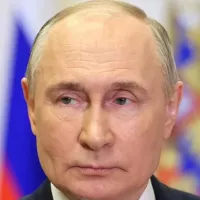
Vladimir Vladimirovich Putin is a Russian politician and former intelligence...
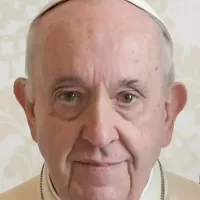
Pope Francis served as the head of the Catholic Church...
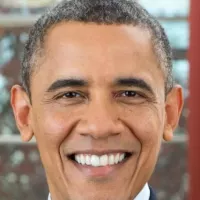
Barack Obama the th U S President - was the...
Puerto Rico is a self-governing Caribbean archipelago and island that...
Venezuela officially the Bolivarian Republic of Venezuela is a country...
The Union of Soviet Socialist Republics USSR existed from to...
Trending

7 months ago Ashton Kutcher and Mila Kunis's bathing habits spark debate; Taylor met the couple.

7 months ago Derrick White Prop Bets Analyzed for Celtics vs Knicks Game 5, May 14, 2025

1 month ago Laura Rutledge and Tim Tebow Pay Off a Lost Bet on SEC Nation.

7 months ago OG Anunoby's Former Teammate, Pascal Siakam, Becomes Key for Pacers in NBA Playoffs
Jaylon La Rone Tyson is an American professional basketball player currently with the Cleveland Cavaliers of the NBA drafted as...
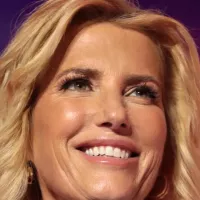
2 months ago Laura Ingraham: A Prominent Voice in American Conservative Media
Popular

Candace Owens is an American conservative political commentator and author...
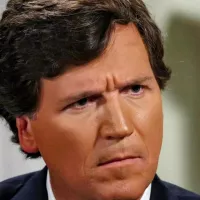
Tucker Carlson is an American conservative political commentator known for...

XXXTentacion born Jahseh Dwayne Ricardo Onfroy was a controversial yet...

Ilhan Omar is an American politician currently serving as the...

Kashyap Pramod Patel is an American lawyer who became the...

Bill Gates an American businessman and philanthropist revolutionized personal computing...